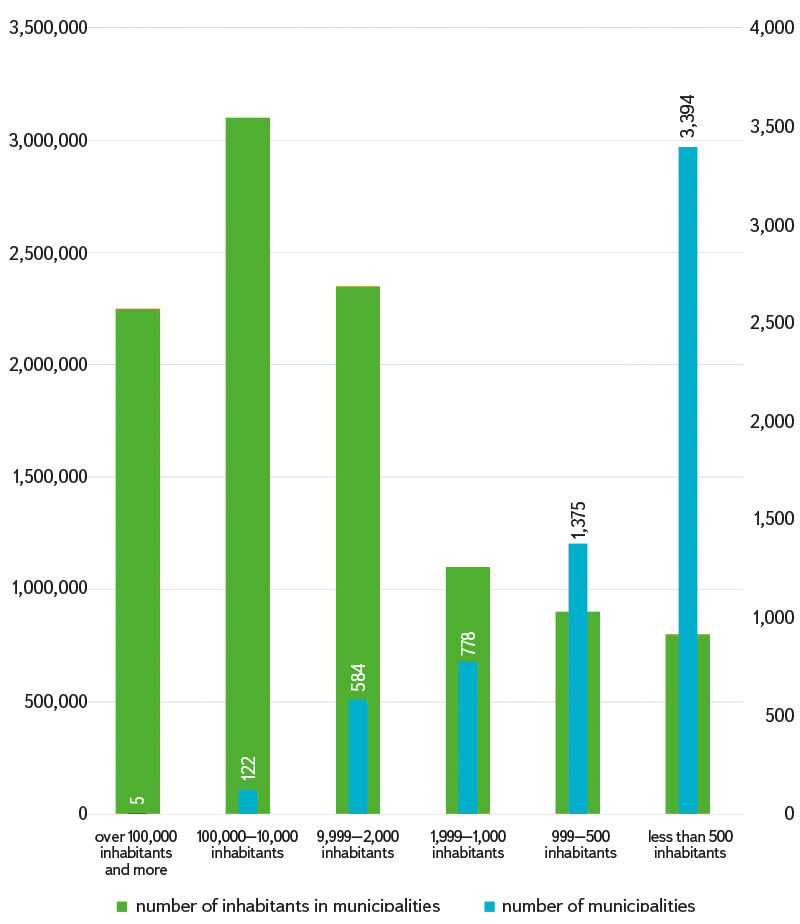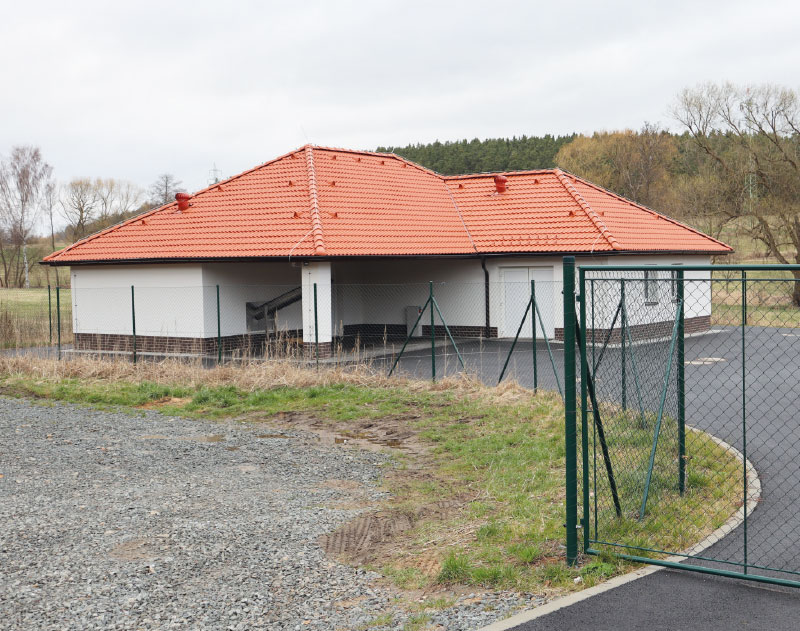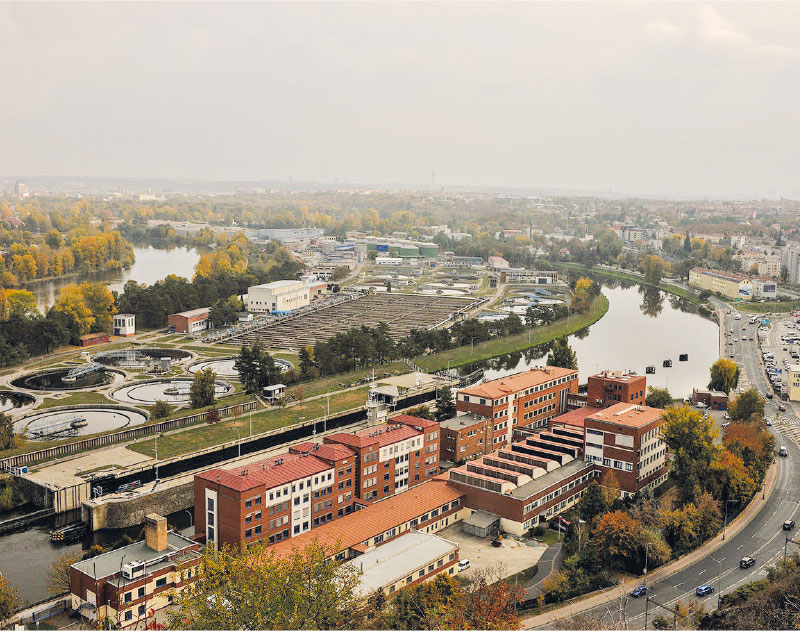Council Directive 91/271/EEC of 21st May 1991, the Urban Waste Water Treatment Directive (UWWTD), entered into force 32 years ago, which is a respectable age for a legal regulation. Since then, through the consistent implementation of its requirements, good results in water protection have been achieved in practice. Between 1990 and 2014, there was a reduction in the amount of pollutants in treated and discharged urban waste water for organic pollution expressed as BOD5 by 61 %, for total nitrogen by 32 %, and for total phosphorus by 44 %. The extensive support provided to cities and municipalities from EU financial instruments as well as from national sources and the relatively strict application of sanctions have led, according to data published by the European Commission (EC), to the fact that currently 98 % of waste water in the EU is effectively collected and removed of and 92 % properly treated. Until now, the Directive’s requirements have primarily focused on centralized systems for the collection, removal, and treatment of waste water in agglomerations producing loads at the level of 2,000 population equivalent (PE) and more.
Since, after 32 years, a certain obsolescence of this legal regulation was evident, the EU came to a decision on its extensive amendment, for which it cited five main reasons:
- The decisive reason given by the EC was the significant residual pollution in waste water discharged from agglomerations below 2,000 PE, in storm water runoff from urbanized areas, in water runoff from storm water overflow during torrential and long-lasting heavy rains, and contamination produced by individual waste water treatment systems.
- The second reason cited by the EC was insufficient alignment of the Directive with EU policy goals set by the European Green Deal, especially in the area of reducing the production of greenhouse gas emissions, reducing the high energy demand of waste water treatment processes, reusing treated waste water, and using the raw material and energy potential of sewage sludge.
- The third reason cited by the EC was the persistently insufficient and very different level of management in individual member states in the operation of sewage networks and WWTPs, in enforcing the “polluter pays” principle, and in managing the level and effectiveness of monitoring and reporting results with the use of modern digitized systems.
- The fourth reason cited by the EC was the need to deal with new problems, such as the high content of micropollutants in waste water (mainly products of the pharmaceutical industry and personal care products), the introduction of effective monitoring of the presence and quantity of epidemic and pandemic factors in waste water, and the implementation of an extended responsibility scheme of producers and importers (Extended Producer Responsibility – EPR).
- The fifth reason cited by the EC was insufficient alignment of the Directive with current scientific knowledge and technological development.
The legislative process of the Urban Waste Water Treatment Directive revision is quite lengthy and complicated. In 2019, a detailed evaluation of this legislation was completed as part of the REFIT [1] programme and published by the EC. On 26th October 2022, the first draft revision of Council Directive 91/271/EEC of 21st May 1991 on Urban Waste Water Treatment was published. Its text was expanded from the original 20 articles and 3 appendices to 35 articles and 8 appendices. In addition to the goals in the original primary area of environmental protection, new goals were introduced in the areas of public health protection, reduction of greenhouse gas emissions, management and transparency of the water management sector, access of citizens of EU member states to hygiene and sanitation facilities, and monitoring of the collection, removal and treatment of waste water. In the proposal, the EC requested the authority to issue a total of 16 delegated acts.
The draft revision of the Directive was subsequently discussed in Brussels by EU Council Working Party on the Environment J.1, composed of representatives of the EC and individual member states, during the Czech presidency at the EU Council (4th November 2022 and 2nd December 2022) and subsequently during the Swedish presidency (13th January 2023, 27th January 2023, 6th February 2023, and 21st March 2023). The proposal was also one of the items on the agenda of the informal meeting of the water directors of the EU member states, EC representatives, the states of the European Free Trade Association (EFTA), and candidate countries, which took place from 20th to 22nd November 2022 in Prague. The topic of the revision and its political context and consequences were also addressed by the ministers of environment at the meeting of the Committee on the Environment, Public Health and Food Safety of the European Parliament (ENVI) Council held on 16th March 2023 in Brussels. On 26th April 2023, the proposal was discussed by ENVI. According to the preliminary programme of the legislative process, the European Parliament should discuss the draft report on 24th October 2023, and a vote in plenary should take place on 20th November 2023.
However, it is still not entirely certain whether the legislative process will be completed within the above-mentioned deadline, as a number of problems and controversial topics emerged during the negotiations, which were reflected on by individual member states and subsequently commented on by the EC. For some of them, it is very problematic to extend the scope of the Directive to all agglomerations over 1,000 PE within the requirement to ensure centralized collection, removal, and secondary treatment of waste water by 31st December 2030. Regarding this goal, the situation may be significantly complicated by the discussion of the revised Directive in the European Parliament, where an amendment to include all agglomerations over 500 PE has already appeared. For the Czech Republic, the adoption of this amendment would mean an extension of the scope of the Directive to an additional 1,375 municipalities (Fig. 1).

Fig. 1. Number of inhabitants in municipalities and number of municipalities in the Czech Republic (Source: Czech Statistical Office)
Equally controversial are the proposed limits on the content of total phosphorus and nitrogen in treated municipal waste water discharged into watercourses. For total phosphorus, the proposed reduction of produced pollution by 90 % by 31st December 2035 and by 95 % by 31st December 2040 is unrealistic. It will not be possible for member states with a small area of land and a small number of large WWTPs to implement the energy neutrality of urban waste water treatment plants. Even for medium-sized and large member states, it will be essentially unattainable in the case of the proposed condition of energy production only from renewable sources of individual WWTPs. The re-use of purified waste water for irrigation in agriculture is welcomed by countries from the Mediterranean region with a long-term water shortage, which have been practicing this measure for several years. In contrast, states in middle and higher latitudes reject this measure because of the real risk of soil and groundwater contamination. The use of nutrients from sewage sludge in agriculture poses a risk to water and soil for some member states. A controversial topic is the introduction of quaternary treatment at WWTPs from 10,000 to 100,000 PE by 31st December 2040
in areas where the concentration or accumulation of micropollutants poses a risk to human health or the environment. The EC has a basic requirement that manufacturers and importers of pharmaceutical and personal care products cover 100 % of the costs of quaternary treatment, which will concern products placed on the EU market (producers, importers, distributors) and will include residues of substances in waste water (micropollutants from the pharmaceutical and cosmetic industry). All EU member states are concerned about the extremely high costs associated with the implementation of all measures to meet the requirements of the proposed revision of the Directive and, according to them, most of the set deadlines are unrealistic. An example of time-consuming and financially demanding investments in both small-scale and large-scale waste water treatment in the Czech Republic can be the construction of sewerage and WWTP in Ledce municipality in the Pilsen Region, as well as the modernization and intensification of the Central WWTP in the capital city of Prague (Figs. 2 and 3).

Fig. 2. Ledce municipality – WWTP 1,000 PE with sewerage (Photo: T. Homola)

Fig. 3. The capital city of Prague – TGM WRI in the foreground, Central WWTP 1,400,000 PE on the left (Photo: I. Ibrahimovič)
Considering the importance of the Urban Waste Water Treatment Directive for the water management sector, as well as the need to adapt it to the knowledge and needs of the third decade of the 21st century through a fundamental revision, as demonstrated by expert arguments, it is necessary that further negotiations of the legislative process are constructive and that the amended Directive is approved in an optimal form both for owners and operators, as well as for the protection of water and aquatic ecosystems.
This informative article has not been peer-reviewed.
